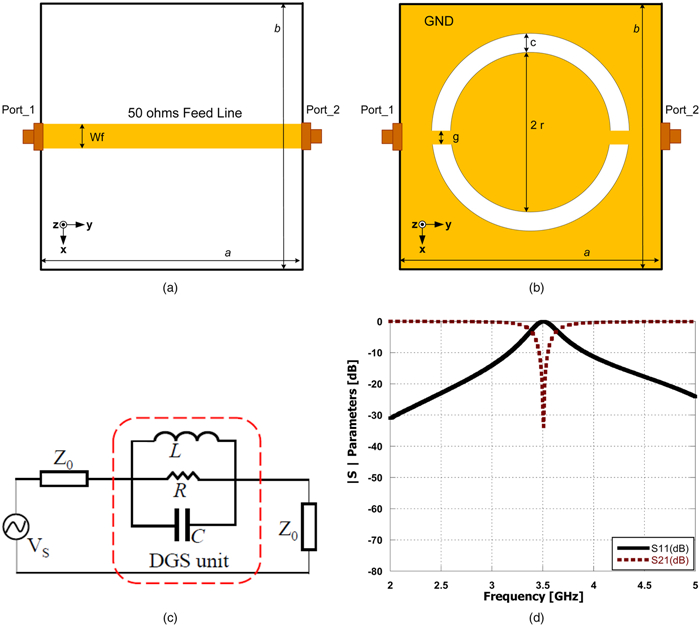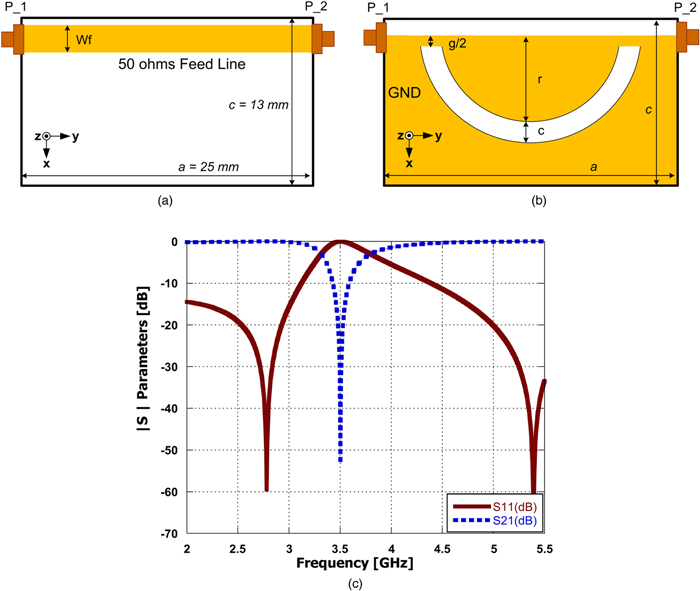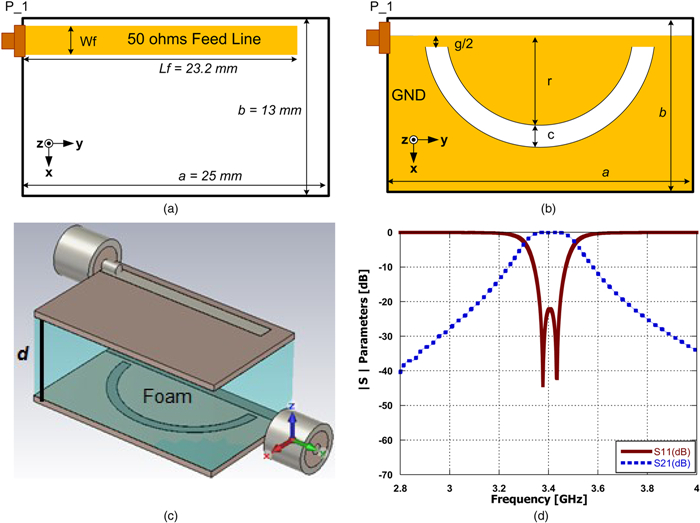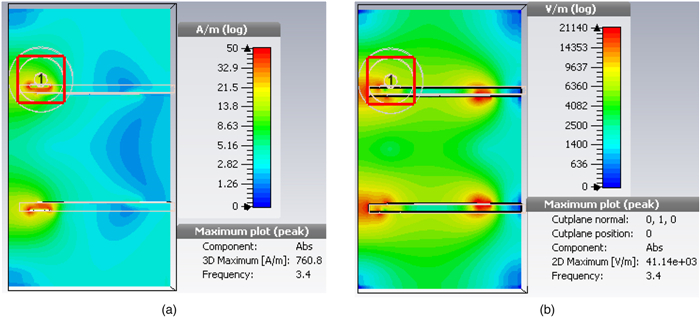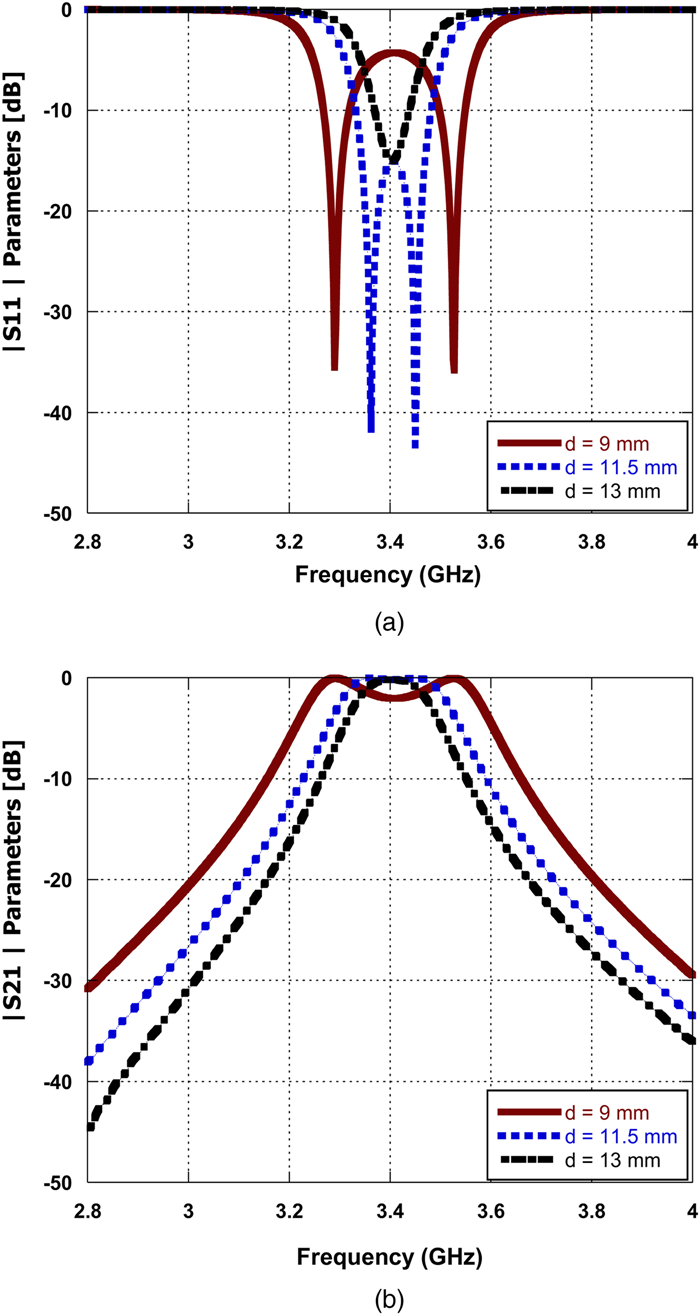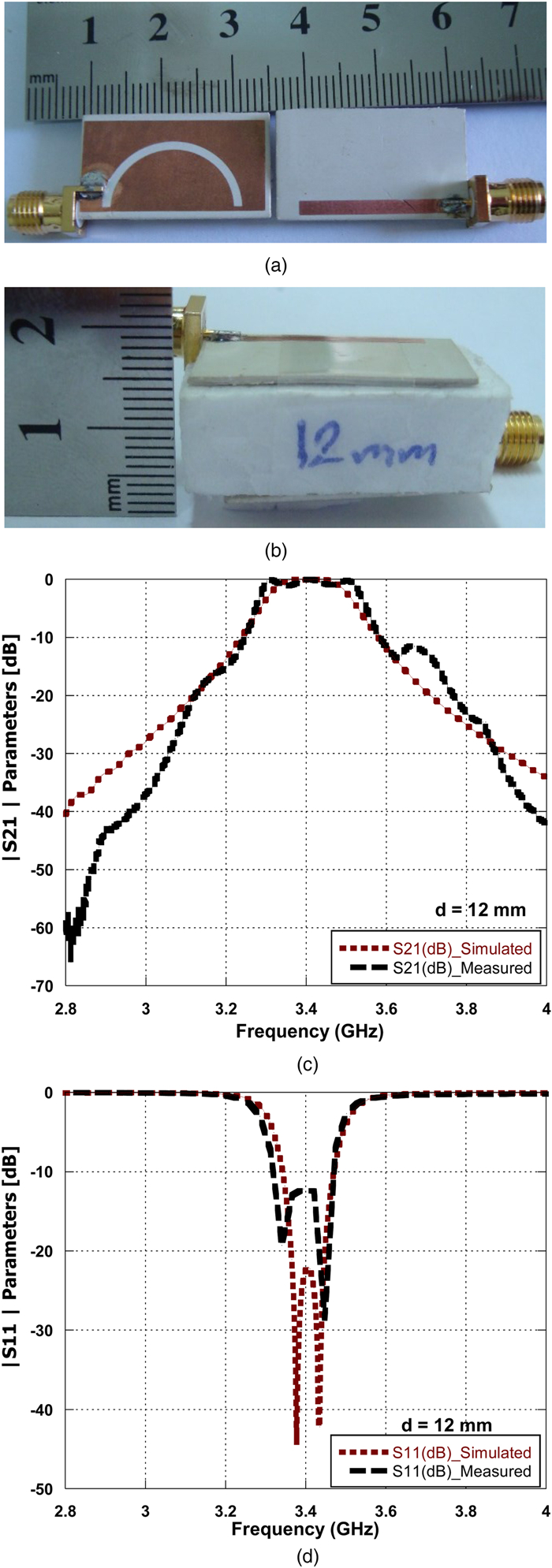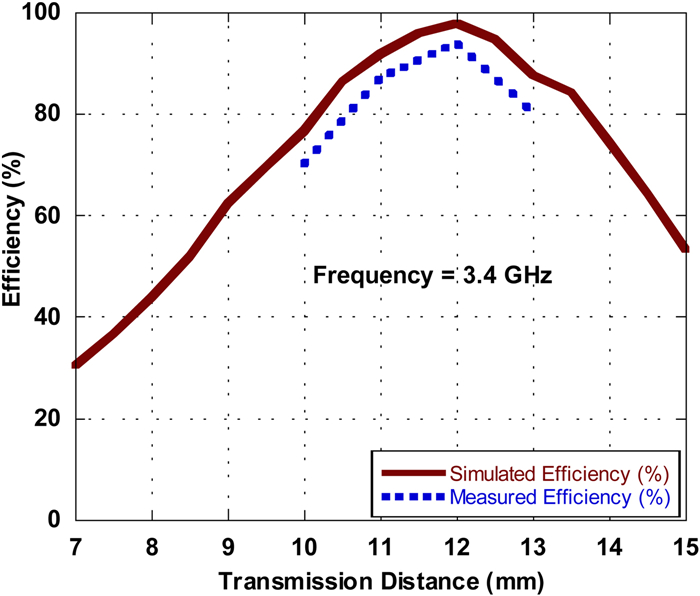-
About this article
Cite this article
Atallah H A. 2018. Compact and efficient WPT systems using half-ring resonators (HRRs) for powering electronic devices. Wireless Power Transfer 5(2): 105-112 doi: 10.1017/wpt.2018.4
Compact and efficient WPT systems using half-ring resonators (HRRs) for powering electronic devices
Abstract: This work presents a novel efficient and compact size coupled resonator system for wireless power transfer (WPT) based on compact half-ring resonators defected ground structure (HRRs-DGS). The proposed design is capable of supplying low power electronic devices. The suggested system is based on coupled resonators of DGS. An HRR-DGS band-stop filter is designed and proposed, and when two HRRs-DGS are coupled back-to-back, it transfers to a band-pass filter leading to a compact and highly efficient WPT system working at 3.4 GHz. The measured efficiency of the proposed coupled HRRs-DGS system is around 94% at a transmission distance of 12 mm which is filled with foam for stable measurements. The proposed design is suitable for charging electronic devices such as wireless sensor nodes at 3.4 GHz. Simulation and experimental results have shown acceptable agreement.
-
Key words:
- Half-ring resonators /
- defected ground structure /
- wireless power transfer









 Hany A. Atallah was born in Qena, Egypt in 1984. He received his B.Sc. and M.Sc. in Electrical Engineering, Electronics and Communications from South Valley University, Egypt, in 2007 and 2012, respectively. He received his Ph.D. degree in antennas and microwave engineering at Egypt–Japan University for Science and Technology (E-JUST). He is currently working as an assistant professor at Electrical Engineering Department, Qena Faculty of Engineering, South Valley University. He was a Visiting Researcher with the E-JUST Lab, School of Information Science and Electrical Engineering, Kyushu University, Japan, from September 2015 to July 2016. He is a reviewer for Applied Computational Electromagnetics Society (ACES), Advanced Electromagnetics (AEM), and Progress in Electromagnetics Research (PIER) journals. His research interests include antenna design, dielectric resonators, metamaterials, tunable filters, reconfigurable antennas, antenna arrays, microwave filters, and FDTD. His recent research has been on cognitive radio (CR) antennas, wireless power transfer (WPT) for biomedical implants, electric vehicles, and electronic devices, breast cancer detection, smart meters, and the internet of things (IoT)
Hany A. Atallah was born in Qena, Egypt in 1984. He received his B.Sc. and M.Sc. in Electrical Engineering, Electronics and Communications from South Valley University, Egypt, in 2007 and 2012, respectively. He received his Ph.D. degree in antennas and microwave engineering at Egypt–Japan University for Science and Technology (E-JUST). He is currently working as an assistant professor at Electrical Engineering Department, Qena Faculty of Engineering, South Valley University. He was a Visiting Researcher with the E-JUST Lab, School of Information Science and Electrical Engineering, Kyushu University, Japan, from September 2015 to July 2016. He is a reviewer for Applied Computational Electromagnetics Society (ACES), Advanced Electromagnetics (AEM), and Progress in Electromagnetics Research (PIER) journals. His research interests include antenna design, dielectric resonators, metamaterials, tunable filters, reconfigurable antennas, antenna arrays, microwave filters, and FDTD. His recent research has been on cognitive radio (CR) antennas, wireless power transfer (WPT) for biomedical implants, electric vehicles, and electronic devices, breast cancer detection, smart meters, and the internet of things (IoT) 


